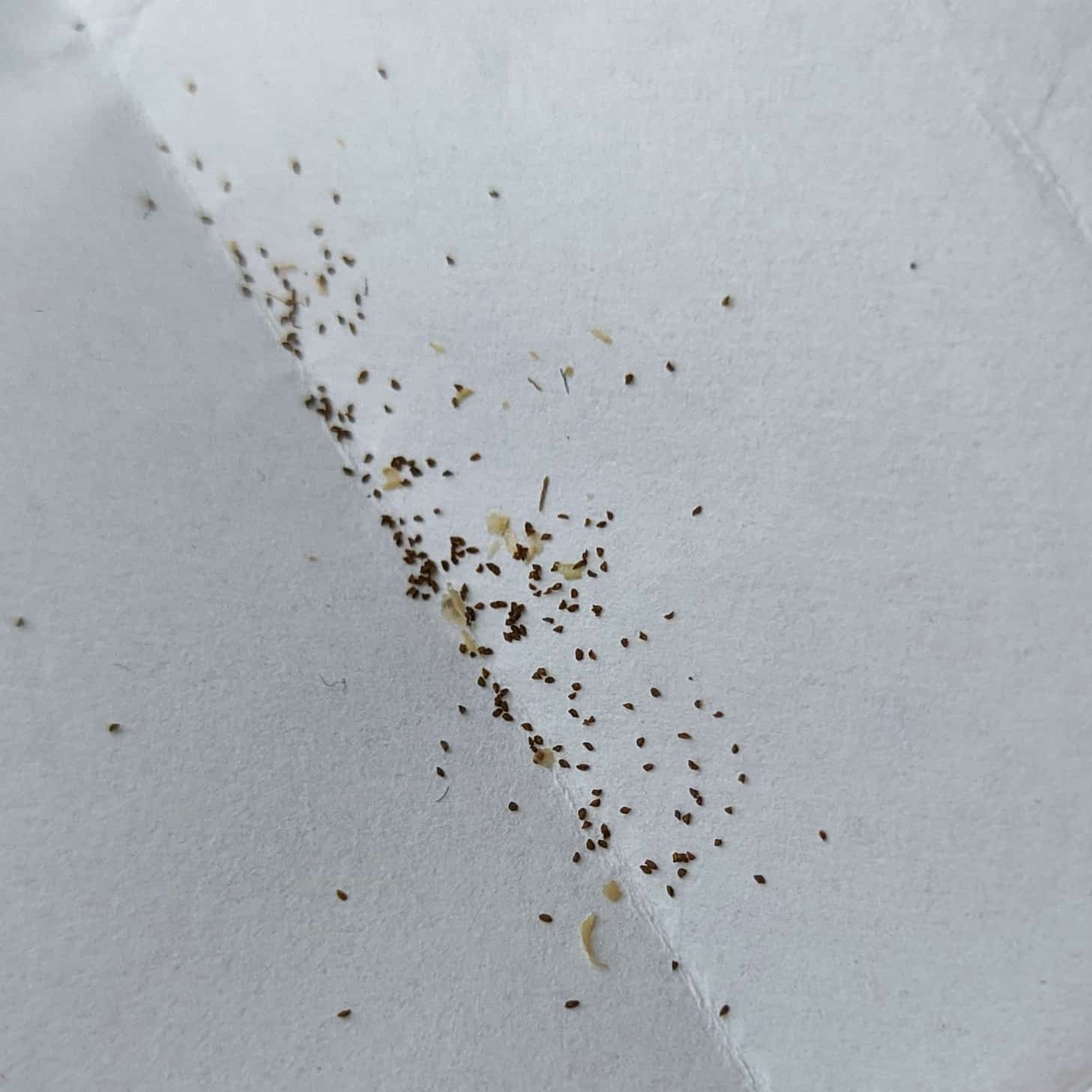How to sow Utricularia seeds
Bladderwort seeds are very tiny, and their ability to germinate depends on the difficulty of the species. Due to their size, care should be taken to ensure that the seeds are not sown too close to one another. If terrestrial bladderwort seeds are spread evenly across the pot, they will form a uniform layer on the substrate more quickly. A folded piece of paper shaped into a small funnel can be very useful for sowing. A brief guide on how to sow Utricularia seeds and the conditions needed for seedlings is provided below.
Terrestrial bladderworts
Light conditions: Diffused light. Be cautious about overheating seeds under direct sunlight.
Temperature: Normal room temperature.
Substrate: A mix of peat and silica sand or perlite in a 2:1 ratio. Seeds should be sown on the surface without covering them.
Air humidity: Seeds ideally germinate at 100% humidity. Cover the pot with transparent foil to maintain moisture while allowing light to reach the seeds. Gradually adapt young seedlings to the humidity levels suitable for mature plants.
Watering: The substrate must be kept constantly moist.
Germination time: Typically 3–6 weeks.
Epiphytic bladderworts
Light conditions: Diffused light. Take care to avoid overheating seeds in direct sunlight.
Temperature: Normal room temperature, though some more demanding species benefit from nighttime temperature drops.
Substrate: A light epiphytic substrate composed of peat, perlite, bark, and sphagnum moss in a suitable mix. Seeds should be sown on the surface without covering them.
Air humidity: Optimal germination occurs at 100% humidity. Cover the pot with transparent foil to retain moisture while still allowing light. Young seedlings should gradually adjust to the humidity levels required by mature plants.
Watering: The substrate must remain consistently moist.
Germination time: Generally 3–8 weeks.


